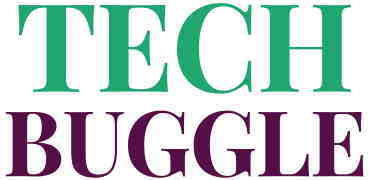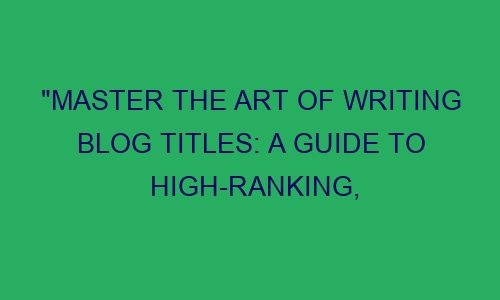Introduction
A good blog title can make all the difference when it comes to getting your content read and shared. But how do you create attention-grabbing headlines that rank well and engage readers? In this guide, we’ll show you how to master the art of writing blog titles for maximum impact.
Section 1: Know Your Audience
The first step in writing a great blog title is to understand your target audience. Who are they, what are their interests, and what are their pain points? Once you have a clear idea of who you’re writing for, you can craft titles that speak to their needs and desires.
Section 2: Use Numbers
Titles that include numbers are proven to be more attractive to readers. They give a clear indication of what to expect from the content and promise a certain amount of value. For example, “5 Ways to Increase Your Productivity” is more enticing than “Ways to Increase Your Productivity”.
Section 3: Create Curiosity
Titles that spark curiosity are also effective at grabbing attention. By posing a question or making a bold statement, you can pique a reader’s interest and compel them to click through to your content. For example, “Can Drinking Tea Really Improve Your Health?” or “The Ultimate Guide to Mastering Facebook Ads”.
Section 4: Optimize for SEO
To rank well in search engine results, it’s important to include relevant keywords in your blog titles. Long-tail keywords, in particular, can help you target specific queries and stand out from the competition. For example, “How to Make Vegan Banana Bread in 30 Minutes”.
Section 5: Keep it Short and Sweet
Long titles can be overwhelming and difficult to read, so it’s best to keep them short and to the point. Aim for 8-12 words maximum and avoid filler words that don’t add value. For example, “10 DIY Beauty Hacks for Glowing Skin”.
Section 6: Use Power Words
Power words are terms that evoke strong emotional responses in readers. They can be used to create urgency, generate excitement, or inspire action. For example, “Don’t Miss These Exclusive Deals on Designer Shoes”.
Section 7: Test and Refine
Finally, it’s important to test your blog titles and see what works best for your audience. A/B testing can help you compare different titles and see which ones generate the most clicks and engagement. And if a title isn’t performing well, don’t be afraid to make changes and try again.
FAQs
1. What are the best SEO practices for blog titles?
Answer: Some of the best SEO practices for blog titles include incorporating long-tail keywords, optimizing for the title tag and meta description, using power words, and keeping the title concise and relevant to the content.
2. How do I choose the right type of title for my blog post?
Answer: The right type of title for your blog post depends on your target audience and the type of content you’re creating. Consider factors like your audience’s pain points, interests, and goals, as well as the format and purpose of the content.
3. Can I use puns or humor in my blog titles?
Answer: Puns and humor can be effective in blog titles, but they should be used sparingly and in a way that is relevant to the content. Make sure your jokes don’t detract from the main message of the post.
4. What are some examples of power words I can use in my blog titles?
Answer: Some examples of power words you can use in your blog titles include “ultimate”, “epic”, “amazing”, “secret”, “proven”, “shocking”, and “surprising”.
5. How many words should a blog title be?
Answer: A blog title should be around 8-12 words maximum. Anything longer than this can be difficult to read and may not be fully displayed in search engine results.
6. Should I include long-tail keywords in my blog titles?
Answer: Yes, including long-tail keywords in your blog titles can help you target specific queries and stand out in search engine results.
7. How important is A/B testing when it comes to blog titles?
Answer: A/B testing is an important part of improving your blog titles and can help you identify which titles generate the most clicks and engagement. By testing different versions of your titles, you can learn what works best for your audience and refine your approach over time.
Conclusion
Crafting effective blog titles require attention, creativity, and a deep understanding of your target audience. By using numbers, creating curiosity, optimizing for SEO, and testing and refining your approach, you can create high-ranking, attention-grabbing headlines that resonate with your readers. So go forth and start writing titles that capture attention, excite, and inspire action!

